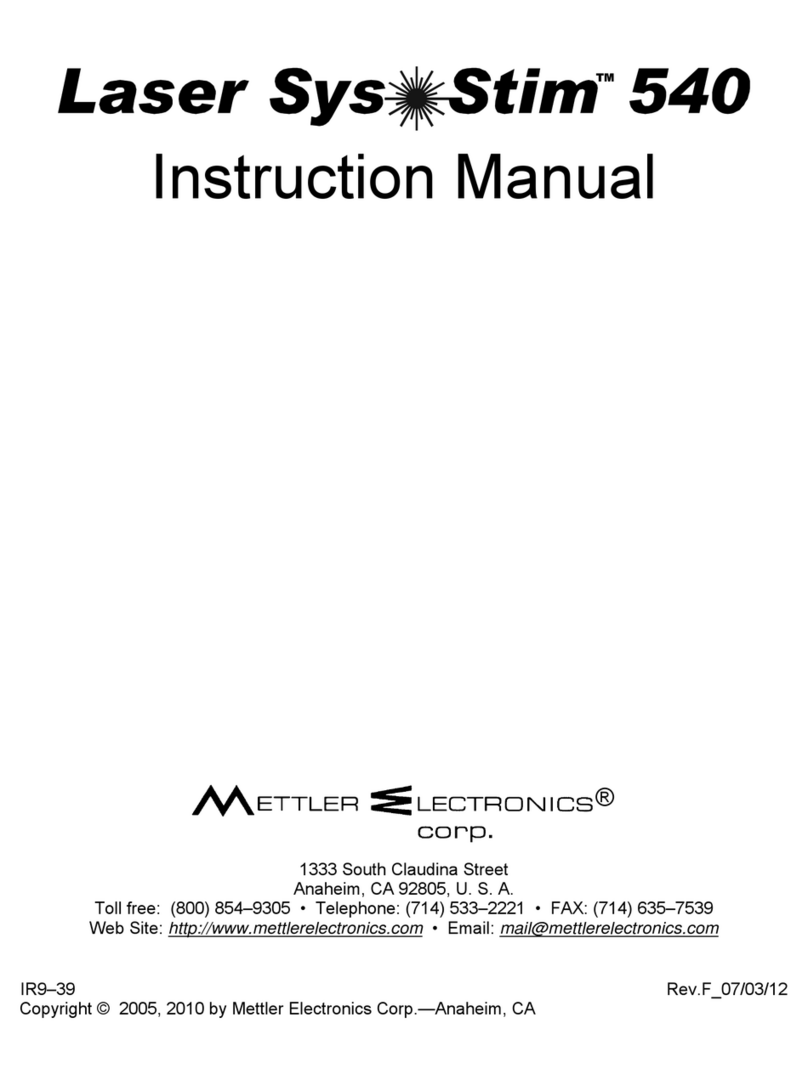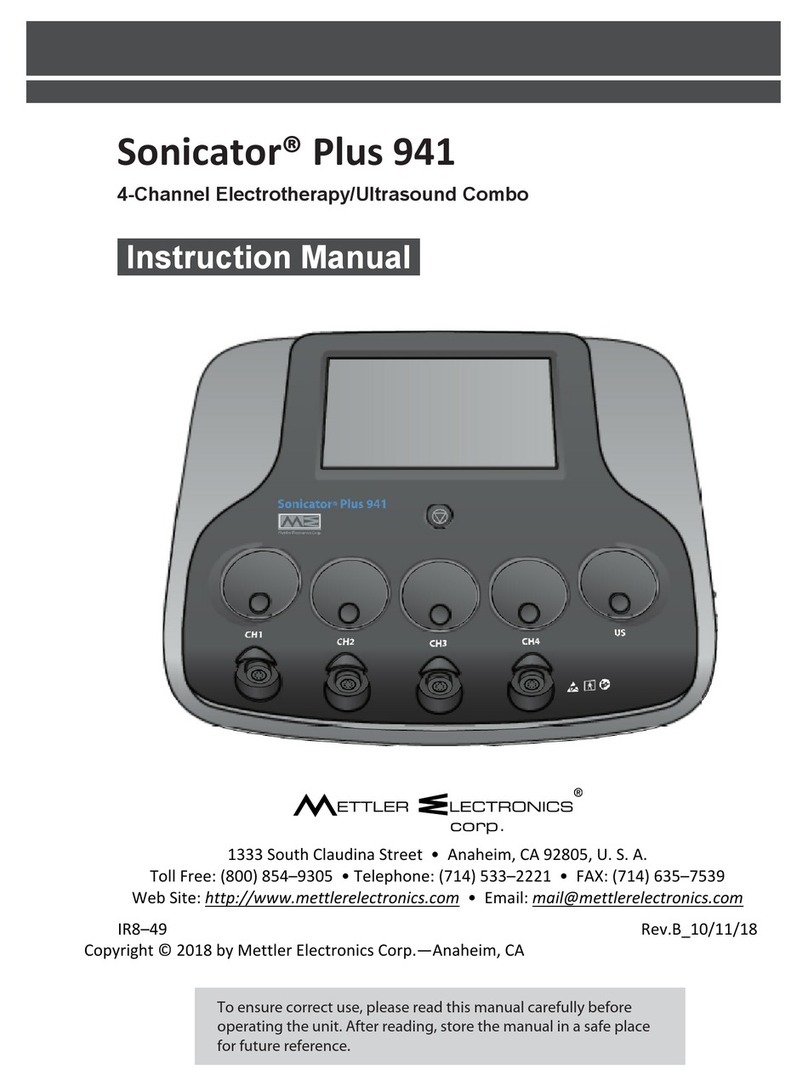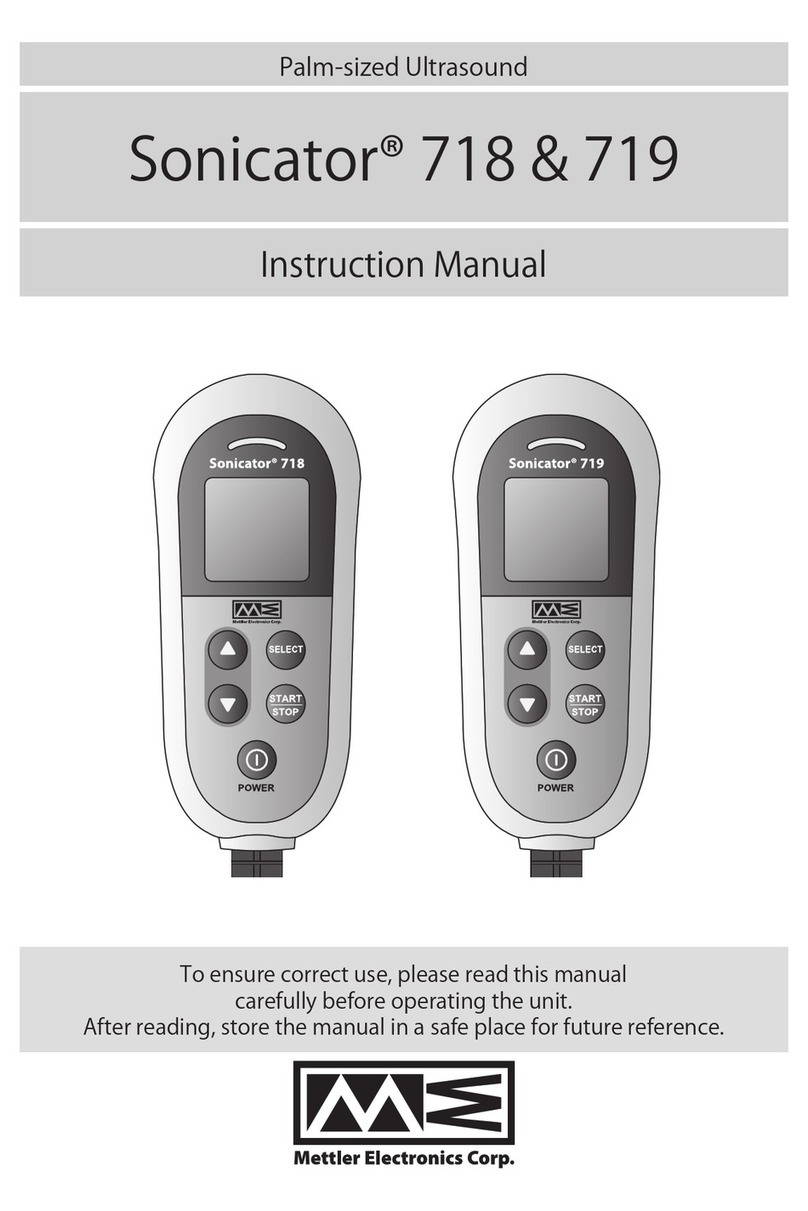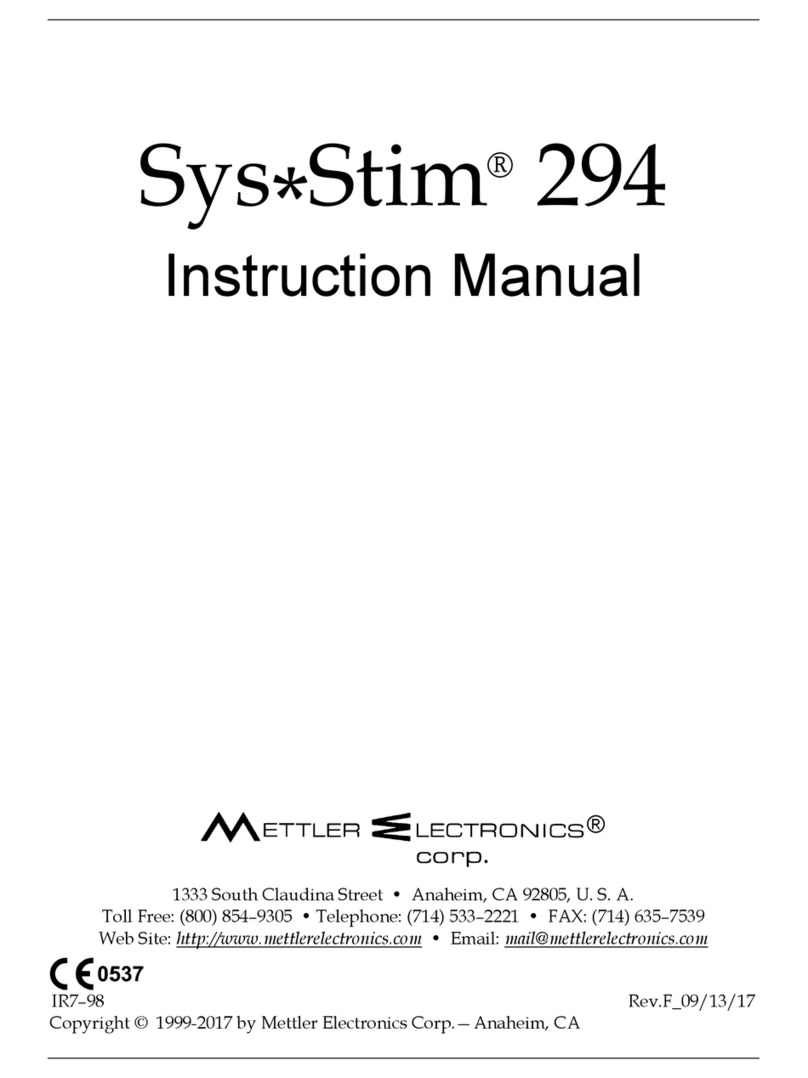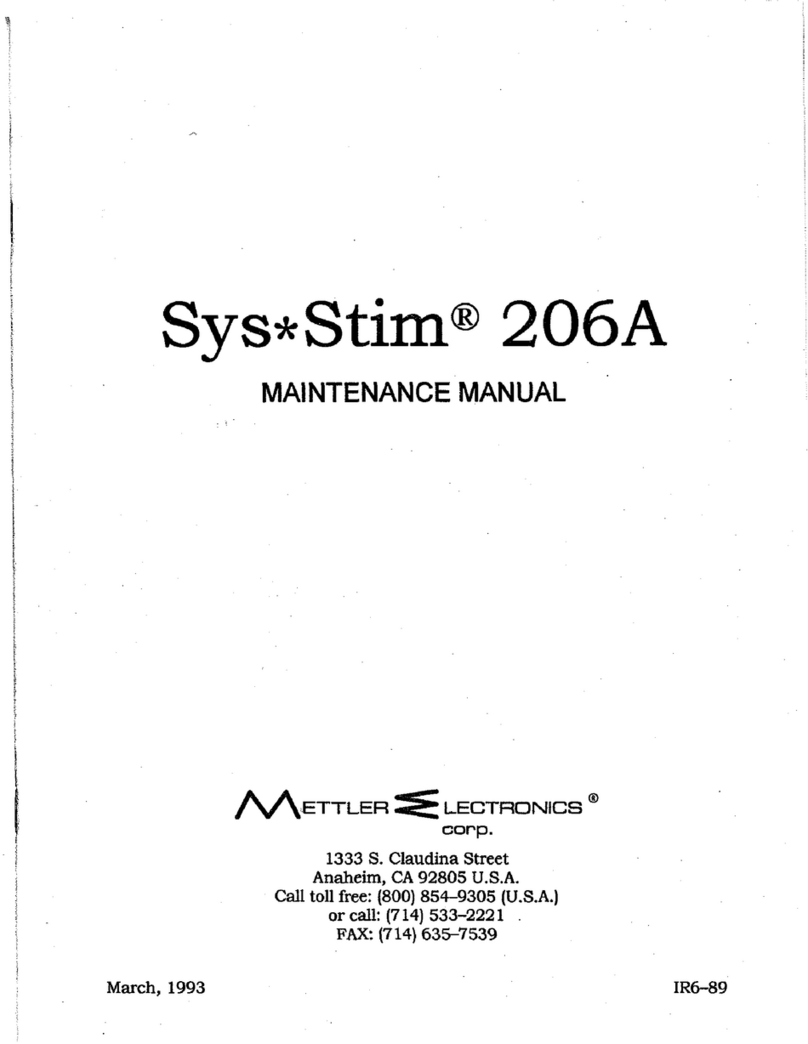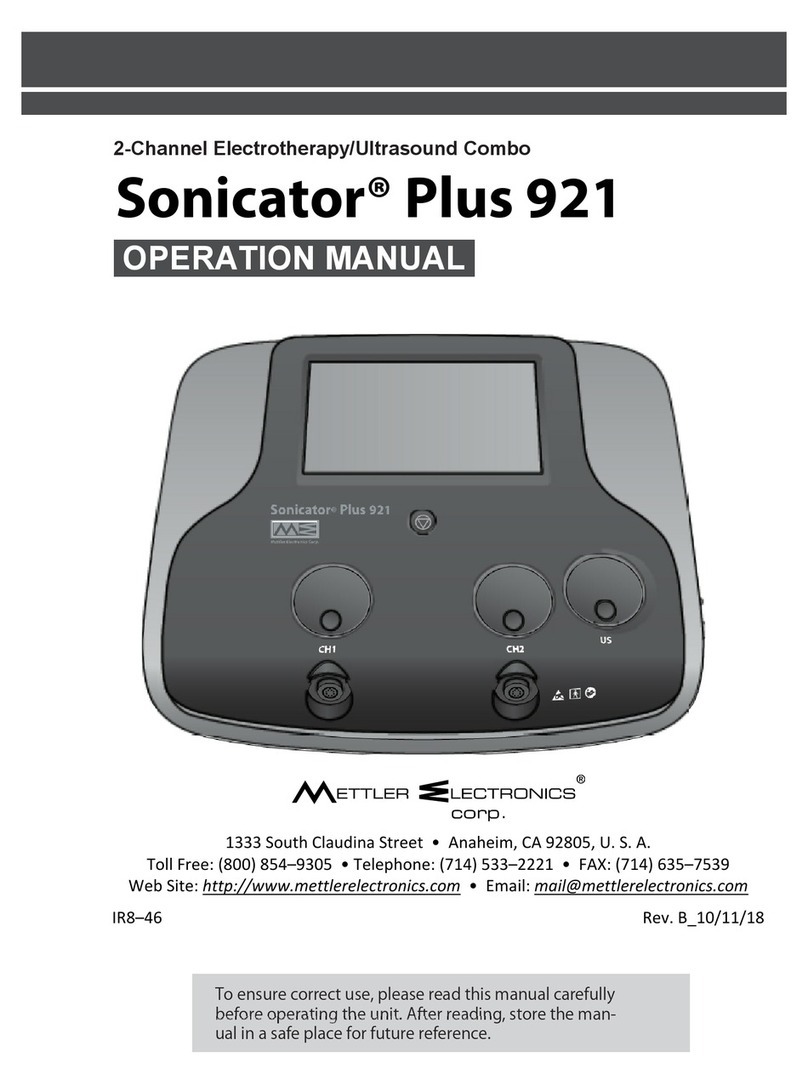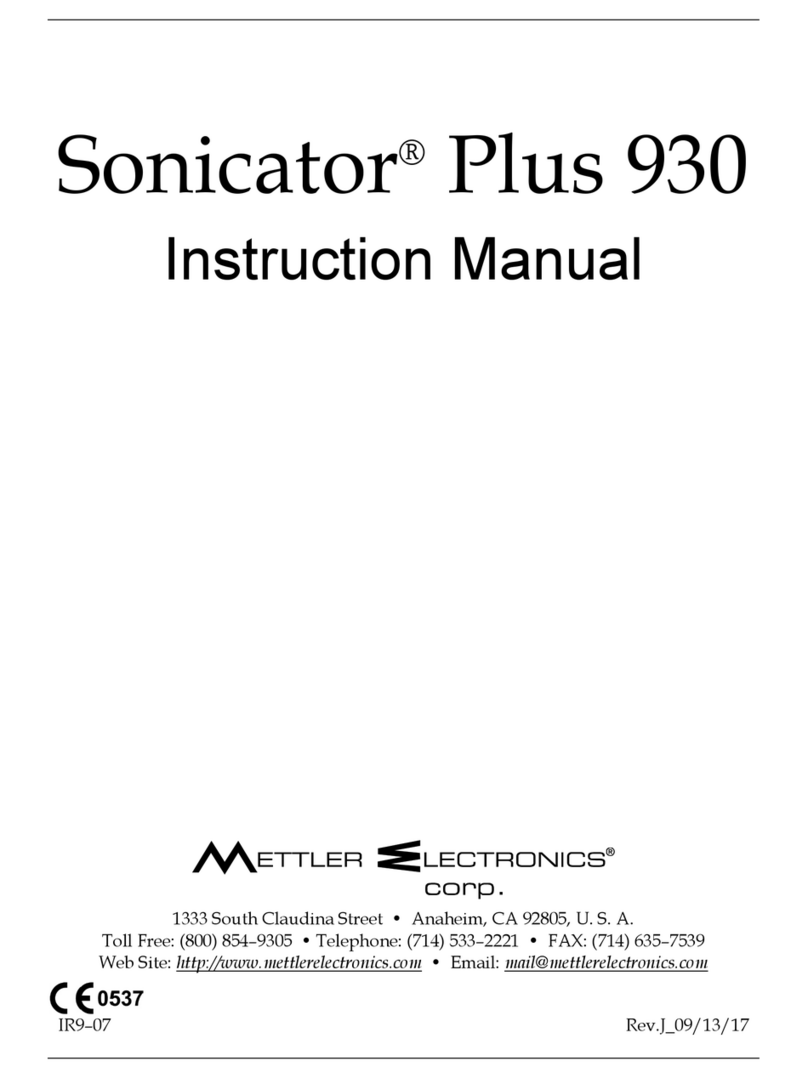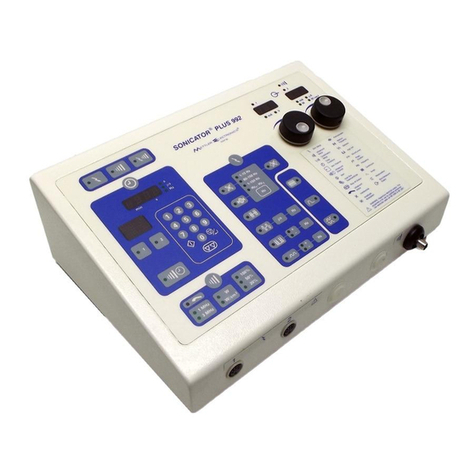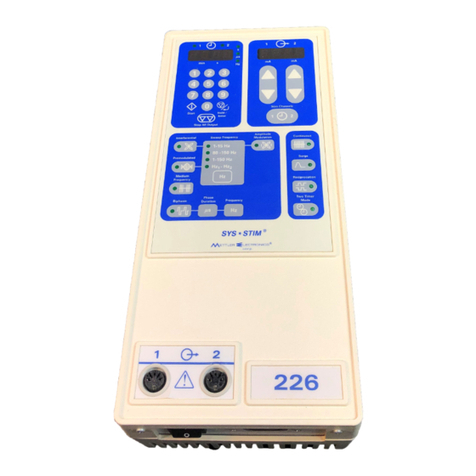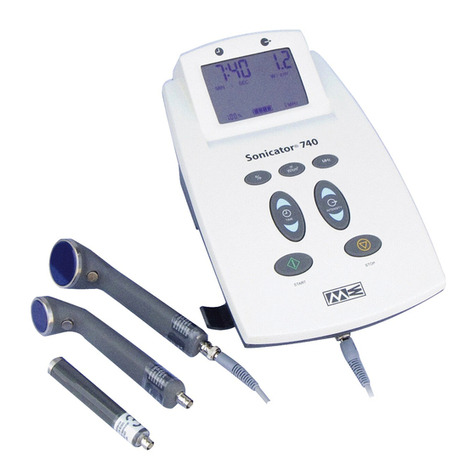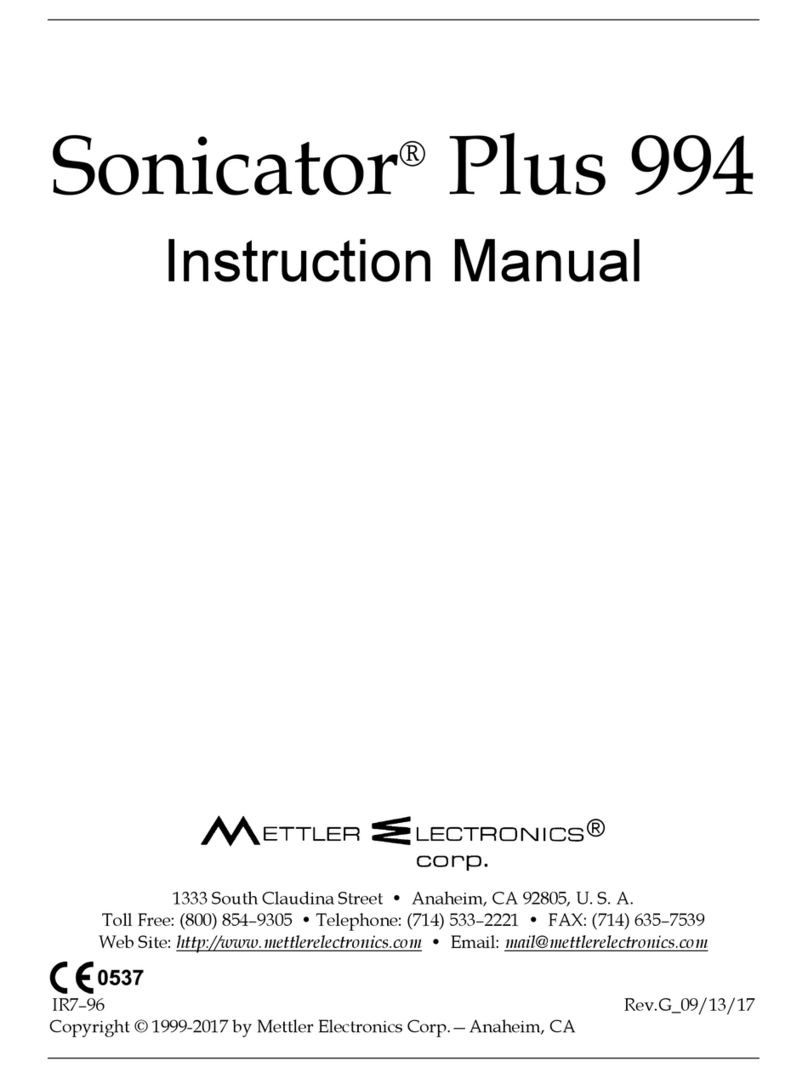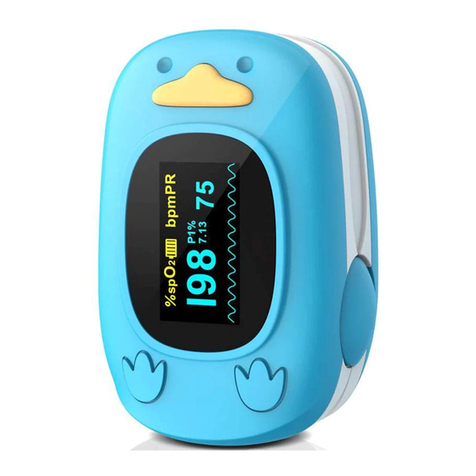
Mettler Electronics Corp.
6
1.2 Introduction to This Manual
Read the contents of this manual before treating patients with the Auto*Therm 390.
This manual has been written to assist you with the safe operation of the Auto*Therm 390. It is
intended for use by the owners and operators of the Auto*Therm 390. The goal of this manual is to
direct the correct operation and maintenance of this unit.
The specifications and instructions presented in this manual are in effect at the time of its publication.
These instructions may be updated at any time at the discretion of the manufacturer.
1.3 Safety Precautions
The Auto*Therm 390 operates with high voltages. Qualified biomedical technicians with training in
service of shortwave diathermy equipment should perform servicing of the Auto*Therm 390 or it
should be returned directly to the factory. To maximize safety during use, the unit should be plugged
into a grounded wall outlet. General safety guidelines for medical electronic equipment should be
followed.
Service may be obtained from the manufacturer by sending the Auto*Therm 390 in its original
shipping container to Mettler Electronics Corp., 1333 South Claudina Street, Anaheim, CA 92805,
ATTN: Service Department. (Telephone toll free: (800) 854–9305, Alternate telephone number: 1
(714) 533–2221) NOTE: All warranty repairs must be performed by Mettler Electronics Corp. or by a
service facility authorized by Mettler Electronics to perform warranty repair work.
A service manual for the Auto*Therm 390 is available from Mettler Electronics Corp. for a nominal charge.
1.4 Caution
Federal law restricts the sale of this device to, or on the order of a physician, dentist, veterinarian or
any other practitioner licensed by law of the state in which he practices.
Use of controls or adjustments or performance of procedures other than those specified herein may
result in hazardous exposure to radio frequency energy. Treatment should be administered only under
the direct supervision of a health care professional.
1.5 Shipping Damage
Your new Auto*Therm 390 is shipped complete in one or more cartons. Upon receipt, please inspect
the cartons and the unit and its accessories for visible and hidden damage. If you discover any
damage, hold all shipping materials, including the carton, and call the shipping agent who delivered
the unit. They are responsible for all damage in transit; therefore, all claims should be filed directly
with them. The factory will not be responsible for any damage in shipment, nor allow any adjustments
unless proper formal claim has been filed by the receiver against the carrier.
The carton in which your new Auto*Therm 390 was received is specially designed to protect the unit
during shipping. Please retain all shipping materials in the event that you will need to return your unit
for servicing. NOTE: All warranty repairs are to be performed by Mettler Electronics Corp. or an
authorized Mettler Electronics warranty repair center.
1.6 Package Contents
Your new Auto*Therm 390 comes complete with all the necessary components to perform shortwave
diathermy. Below is a list of items that are included in the shipping carton. There are also other
optional accessories available for this unit. They are listed at the back of this book.
1. Auto*Therm 390
2. Two each, 12 x 18 cm soft-rubber plate applicator complete with flexible cable (3963)
3. Six each, 14 x 20 cm felt spacer for soft-rubber plate applicators (3965)
4. Two each, 18 x 26 cm cloth cover for soft-rubber plate applicators (3967)
5. Two each, 48 inch Velcro receptive elastic straps (2009)
